I know, I know, go ahead and throw the tomatoes at me now for talking about math state test prep. Despite our emotions regarding if state tests should be implemented or not, the truth is that our students will still have to take them. So promise me that you won’t stop reading. Just smile and take a deep breath as my goal is to provide you with tools that will make this task less daunting. In my state, we have something called SLTs(student learning targets). Let me just say, SLTs are not tasks that teachers necessarily hit flips when they hear mentioned. If you say those 3 letters to most teachers in my state, you may get a snear rather than a smile. Let me briefly explain why SLTs are not teacher’s favs.
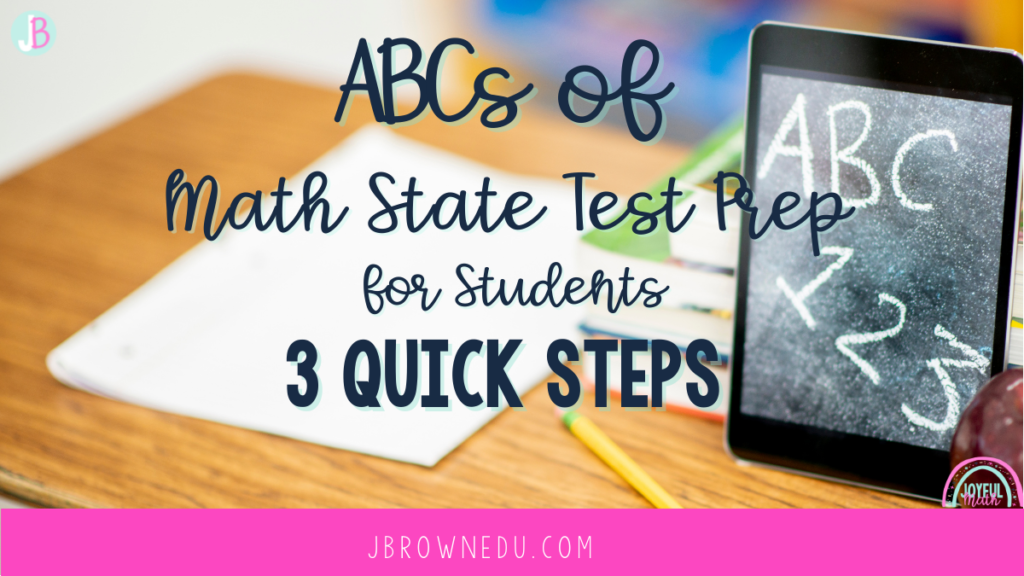
In some districts, SLTs were tied to student performance on the state tests. An example of an SLT that I’ve had before was, “By May 2015, 85% of students in my class will score Basic or above on the LEAP test.” I absolutely despised this because it completely disregards the growth and progress that lower-performing students made throughout that school year.
Regardless of my feelings about it, I knew at the end of the day, I didn’t want my students to have the test in front of them on testing day, and feel like I didn’t prepare them for it. I knew it was still my job to prepare them.
I’m also aware of the strike that some teachers may be on, stating that they don’t teach to a test. I agree that we don’t teach to a test, however, it is our job to prepare students before taking a test.
Test Prep for Teachers
Would you want to walk into your Praxis Exam without no one ever having taught you about the structure of it? I was only able to pass the PLT Praxis on the first try because I had amazing professors in my undergraduate program that prepared my cohort for the structure of the test and gave us pointers on how to navigate it with strategies.

I can’t say the same about any of the first round of Praxis I exams because I had no clue when I jumped into taking those tests the first time. However, after failing the first round, I had a better idea of the structure of the test and was able to better prepare for it. While I’m thinking about it, if you need support with passing the Math Praxis Core exam, Robin Corneki has some great information to support you. She shares her Top 7 Strategies for Passing the Math Praxis Core Test.
Tips for Test Preparation
Before I share the math state test prep tips with you, if you’ve been around here for a while, you know I’m big on self-efficacy first. Make sure that you have laid the foundation with students in building their confidence. I’ve seen teachers use scare tactics to get students to perform well, and I’m guilty of it as well. Scare tactics don’t work because they instill fear and anxiety in students, which makes them perform worse. In brain studies, the results show that when students are experiencing math anxiety, there is a part of their brain that literally shuts down, and they can’t think.
If you need support in building students’ confidence and self-efficacy, you can download a FREE guide below that’ll get you set up. You can start using this in your class tomorrow. It’s not too late.
I also suggest doing a read-aloud of the book, “Anti-Test Anxiety Society.” It’s a super cute must-read that your students will absolutely be able to relate to. Especially if they experience test anxiety. In this book, a student with major test anxiety learns to use a different part of her brain to ease it. After reading this book, your students can apply the “Dynamic Dozen” to ease their anxiety as well.
So let’s dive into it. I want to provide you with 3 simple tips that can get you started immediately with preparing your students for your state standardized test.
Access the Assessment Guide
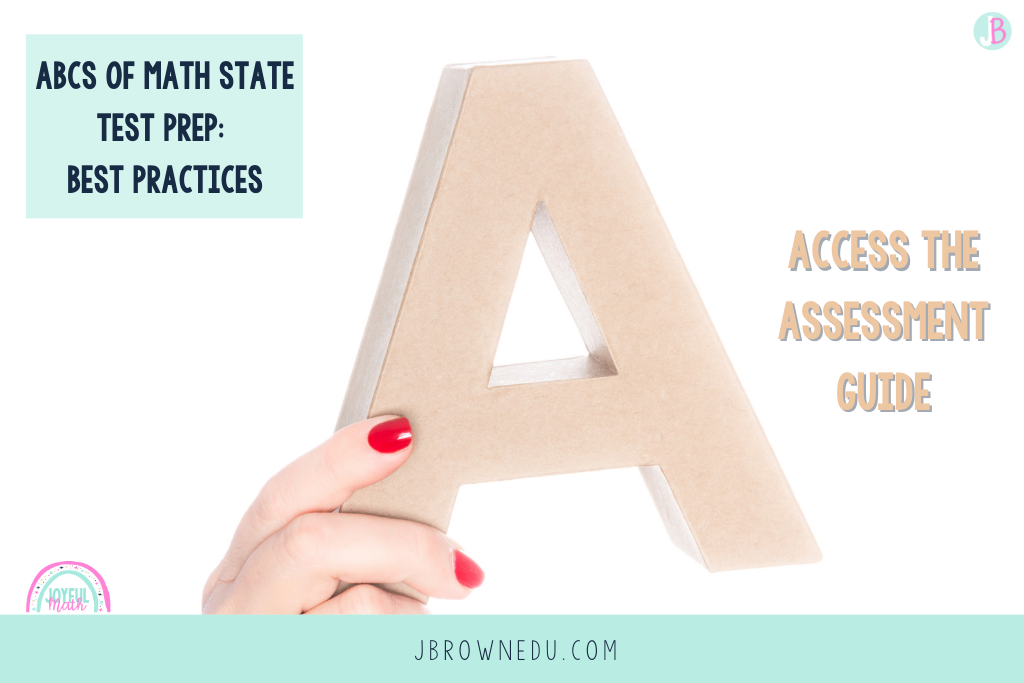
So no matter which state you are teaching in, your state should have provided guidance on the assessment. If you haven’t received this guidance from your school leadership, no worries. You can Google your state test name and then Math Assessment Guide. For example, if you’re in Georgia and your students take Georgia Milestones, you would Google, “Georgia Milestones Math Assessment Guide” and it’ll come up. You need this guide to become familiar with the structure of the test so that you know how to best prepare them.
Test Preparation Techniques
In the assessment guide, you will find all sorts of valuable information. Think of it as getting into the brain of the test developers. This guide will give you a breakdown of what percentage of standards are covered on the test, the question types, item types, percentage of each DOK question, test design, point values, etc.
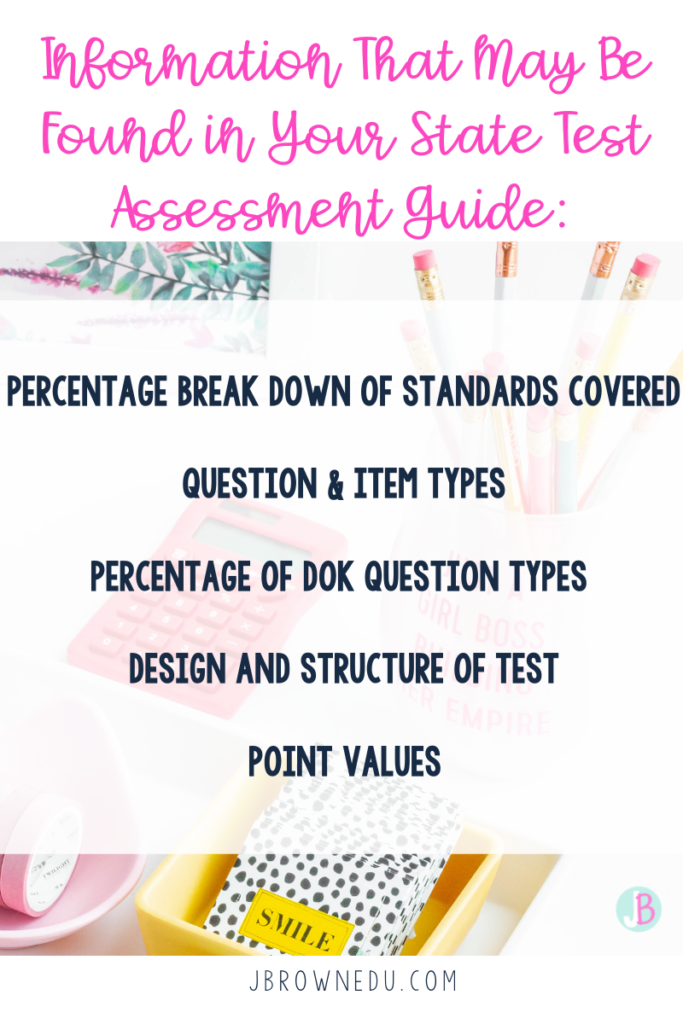
Knowing this is important because it will help you know exactly where to focus. If you see that your students are weaker in a specific question or item type, you can focus your efforts more on that area.
Build an Item Bank
Now that you are aware of the structure of the test, you need to build an item bank. You need to have a reservoir of the various types of questions that students will see on the test.
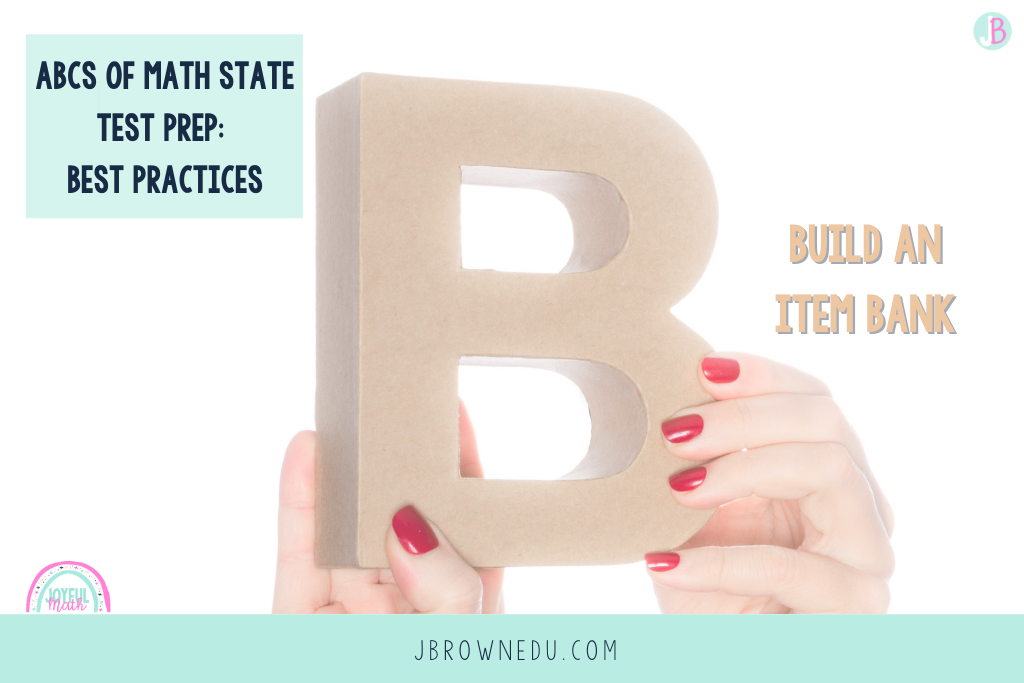
Test Preparation Material
Your state should have a released practice test. Once again, if you haven’t received it from your school leadership, you can Google it. Just type in your state test name, your grade level, and then Math practice test. This will be a great starting place, but you will need more questions than those in your item bank.
I suggest looking at the questions and re-creating them. I know this may not be ideal and time effective right now, but it will help you understand the thinking of the questions better. If you absolutely don’t have time, reach out to teachers in your school. Try to find someone who may have taught the grade level before. You can also talk with your grade level team to see who taught the class before you. That teacher may be willing to give you some information if she has some.

If neither of those options work, try finding a Facebook group for your subject and grade level. There may be some teachers in your state that have resources.
Test Preparation Websites
Don’t lose hope just yet, there are some really great test preparation websites that teachers have created practice tests on. Edulastic is one of those sites. Go to the site and type in your state test name for your subject. For my state, all practice tests for each testing grade have been placed there.
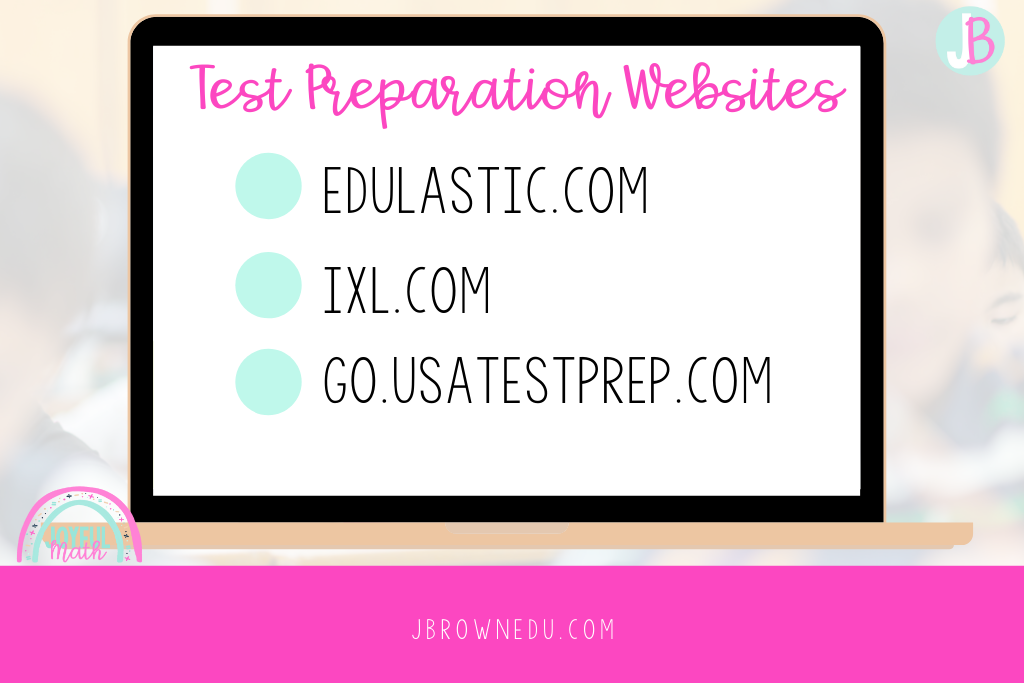
Now that you have your item bank created, I suggest printing the questions and placing them in a binder. Go through each question and solve it. As I mentioned earlier, this will help you understand the thinking that students will have to engage with to solve the problem. Once you understand the thinking, you’ll be more equipped to prepare students. Who would you like to take trip advice from? Someone who has actually taken the trip before or someone who just aspires to go on the trip? Someone who has been on the trip before, can give you pointers and tell you things to watch out for. This helps you do the same for your students.
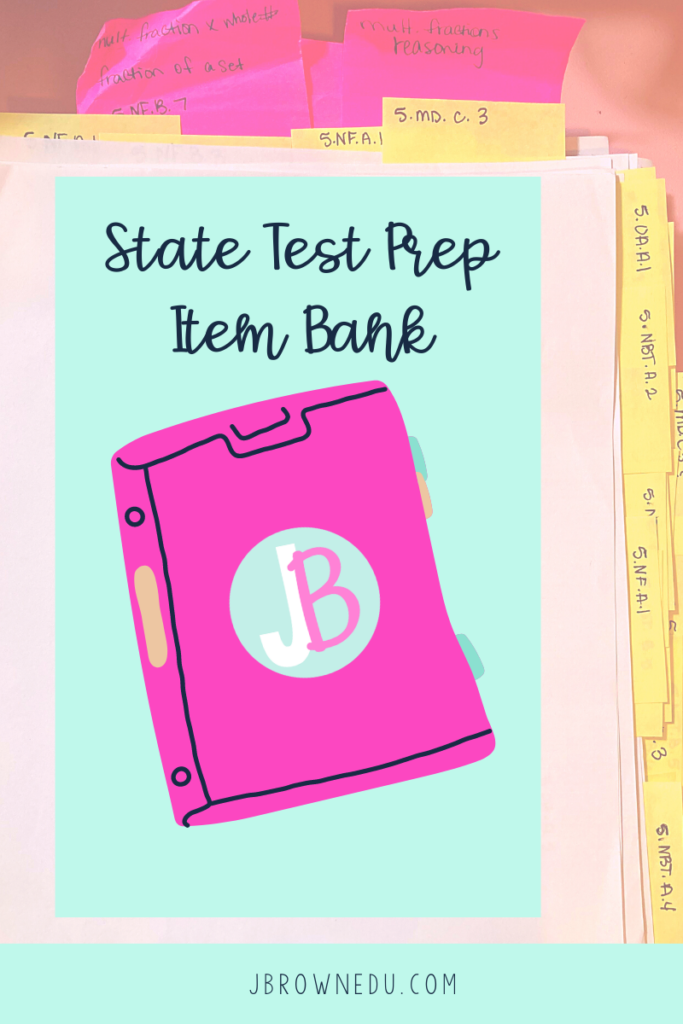
After solving each question, in your binder, tag each question to a standard with a small sticky note. Write the standard at the top of the sticky so that it pokes out of the binder like a tab. This will help you easily reference a question that is aligned to a standard.
Carry it Out
Now it’s time to carry it out. You want to give students as many opportunities as possible to engage with these items and question types. This will help them become comfortable with them. You don’t want students to get to the test and not know how to operate a drag and drop question. Or not have a strategy to answer all parts of a constructed response question.

Test Preparation Activities
There are several ways to implement these questions. I’ll give you three of my favorite ways.
- Bellringer
Begin taking questions from your item bank and implementing them as morning work when students enter your class. Every day my students completed a warm-up question that was aligned to a state test question. A really great resource that one of my former principals told me about is the Common Core Math 4 Today workbooks. There are books for every grade level. They are aligned to Common Core State Standards, and they aligned beautifully with my state test. Most of my daily warm-ups came from this 5th-grade book every year. At the end of the year, I didn’t have to worry if I prepared my students for the test or not.
- Exit Tickets
No matter which curriculum you are teaching with, you can always give your students an aligned exit ticket. It should be aligned with a question type that students will see on the state test. When planning, this would be a great time to use your item bank binder. Find the tab with the standard that you are teaching and redo the exit ticket that came with the curriculum. You can substitute it out completely and use the question from your binder, or you can merge the two.
When I taught at the virtual school, I loved placing those questions in Nearpod for students to solve there. It was less paper and I had the data stored in one place.
- Weekly Tests
Since you’ve looked at your assessment guide to know the various item types that will be on the test, I would suggest structuring your weekly tests to look like that. I would include at least one of each item type on my weekly test. Or if you feel like that is too much, rotate them out each week. Do half of the item types one week, and then do the other half next week.

Teacher Tech Tip:
If you create your tests in Formative.com and have students take them there, you can tag each question to a standard. You can then download an excel spreadsheet from the tracker. It’ll have the data already sorted for you by the standard.
Test Preparation Review
One of my favorite education quotes is by Francis Parker who said, “The center of all movement in education is the student.” With that being said, we have to look at how students are performing on the opportunities that they’ve had to engage with the practice test questions.

Create a system to track how your students perform on each standard with the exit tickets that are given as well as the bellringer and weekly tests. For the standards that the majority of the students aren’t doing well on, continuously place that standard or question type in front of them until you can get to the root of the problem. Is it that particular question type or is it the standard that students are experiencing difficulty with?
Once you’ve identified the problem, create a plan to address it. You can pull small groups, create more centers for that strategy, etc.
I hope you’ve found these tips valuable, but before implementing any of them, promise me that you’ll make sure that you focus on students’ self-efficacy first. We’ve got to win the battle in their minds first. Grab your FREE guide below!

